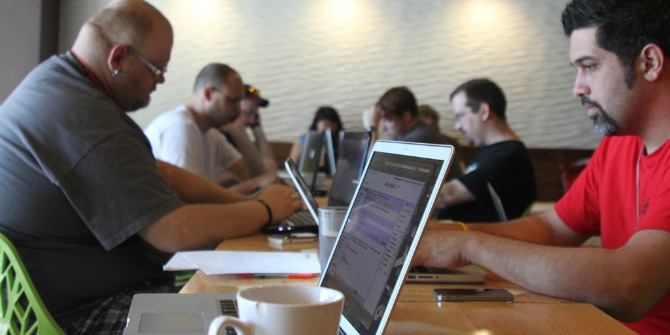At age 81, American TV personality Martha Stewart graced the cover of the Sports Illustrated magazine. As we live longer, these high-profile celebrity moments make us question our own aspirations regarding health, relationships and careers. Daniel Jolles and Teresa Almeida list ways in which leaders must focus their efforts to capitalise on the increased workplace age diversity that comes from these longer lives.
Today marks ‘International Age Diversity Day’, a global celebration in the workplace and a call to leaders not to overlook its importance as part of their diversity, equity and inclusion (DEI) strategy. An ageing population makes greater age diversity inevitable. Al Pacino is becoming a father again in his 80s, joining Robert De Niro who recently welcomed his seventh child at 79. Martha Stewart’s appearance on the cover of Sports Illustrated enjoyed a “break the internet” moment that may or may not point to a growing trend in age-positive representation by various brands. Yet, our workplaces are struggling to embrace diverse age representation. Many leaders often undervalue age equity or ignore age diversity altogether, despite a rapidly ageing workforce. Each of us is growing older and is part of this demographic change. These high-profile celebrity moments are notable because they make us question our own aspirations regarding health, relationships and careers if we are to live longer. If leaders are to capitalise on the increased workplace age diversity that comes from these longer lives, they must focus their efforts in a key few ways.
Make age the ‘exemplar’, not the ‘exception’
Increased diversity is considered highly desirable for teams because it provides a greater variety of perspectives. Given the significant role age plays in shaping our experiences and perspectives, it is not surprising that age diversity directly benefits performance via enriched knowledge, skills and social networks. Age diversity is also particularly beneficial for tackling complex business problems, where the knowledge, skills and social networks can all be leveraged. In addition to the direct benefits of age diversity, when leaders bring age diverse teams together in a positive climate, free from stereotypes and discrimination, there are indirect benefits from employees of all ages enjoying higher job satisfaction and motivation to stay with the firm.
Think differently about ageing
Positive celebrity stories about breaking new ground in older age help change the traditional narratives about ageing. Media stories like those about Martha Stewart that show positive attitudes towards ageing are good for the mental health of older adults. In fact, taking a more positive view of ageing improves everyone’s health, wellbeing and longevity regardless of age. Yet this positivity is undermined by the traditional narratives that older workers should ‘step aside’ for younger workers. Although wealth and opportunities for younger people are arguably less abundant than they were for previous generations, there is no evidence that pushing more older workers into retirement would increase opportunities for younger workers. Rather, we should encourage longer, fulfilling working lives to increase productivity, reduce the burden on social security systems and improve health.
Embrace the diversity characteristic in all of us
One of the challenges to prioritising age diversity is the fear that it might hinder the much-needed efforts in traditionally underrepresented areas of gender and race / ethnicity. However, age affects us all, effectively ‘intersecting’ with gender, race / ethnicity, sexuality and other demographic characteristics. For example, women are more likely than men to experience ageist attitudes concerning appearance, but older men might face greater penalties for switching careers. Those who oppose discrimination based on gender and race are often motivated to discriminate against older adults. This is a mistake. Given that age affects us all, making age part of the DEI strategy enhances, rather than detracts from other diversity efforts.
Embracing age diversity and improving equity for older workers means addressing issues earlier in life, not just at the point they arise. Good health management practices from the moment we enter the workforce can effectively prevent work-related mental and physical health problems associated with ageing. This contributes to better wellbeing across the entire workforce. By proactively promoting wellbeing, leaders can create a supportive environment that encourages retention, regardless of age.
Recognise that age inclusion is just inclusion
Too often we think about ‘age-specific steps’ when thinking about the role of age in the workplace, focusing on age-specific policies, practices and procedures. However, like health management, investing in age-inclusive HR practices creates more inclusive climates for workers of all ages. For example, good training can be especially beneficial for older workers. But rather than invest in age-specific training (which itself can promote age stereotypes), age-inclusive training is simply well-designed training that is available and beneficial to all age groups. The same is true of flexible working practices. These benefit everyone but might be especially important to older workers. We have seen this in workplace disability efforts where changes aimed at disability inclusion, including wellness programmes and meeting protocols (such as making slides available before meetings) have benefited all employees. Investing equally in the knowledge, skills and abilities of older workers helps retain older and younger workers alike, encouraging a wider group of staff to then invest in the opportunities available to them. Like good training and flexibility, inclusion is important to everyone, but can be especially important to older workers.
Age diversity day presents an opportunity for leaders to prioritise the business case for age diversity, ensuring age is part of the DEI strategy and rethinking the traditional narratives about careers that might sabotage it. It is an important reminder that age is something we all share, and we cannot build a culture of inclusion without age inclusivity.
♣♣♣
Notes:
- This blog post represents the views of its author(s), not the position of LSE Business Review or the London School of Economics.
- Featured image by Centre for Ageing Better on Unsplash
- When you leave a comment, you’re agreeing to our Comment Policy.





